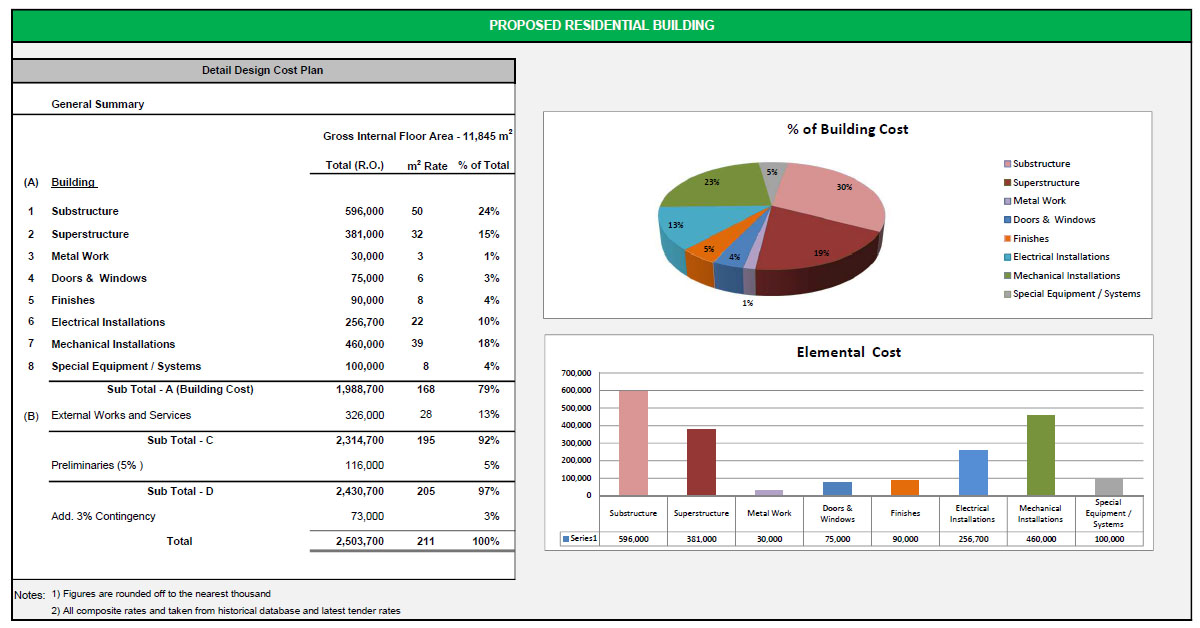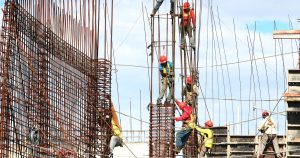Introduction
Imagine you’re planning a road trip to an unknown destination. You have a limited budget and need to estimate the overall cost of your journey. Will you simply rely on guesswork or random figures? Of course not! You’ll carefully consider the distance, fuel prices, accommodation, food, and other factors to come up with a preliminary estimate. This estimate will serve as your compass, guiding you through the uncertainties and helping you make informed decisions along the way.
In the realm of construction and project management, preliminary estimates play a similar role. They act as beacons of cost certainty amidst the chaos of planning, ensuring successful outcomes and avoiding financial pitfalls.
Understanding Preliminary Estimates
In the realm of construction and project management, preliminary estimates are the initial approximations of the costs associated with a project. These estimates are prepared during the early stages of planning, usually before the tender process.
Their primary purpose is to provide a reasonable cost projection for a project, helping stakeholders make informed decisions about its feasibility and viability. Preliminary estimates act as a foundation, setting the stage for accurate budgeting, cost management, and successful project execution.
Preliminary estimation techniques play a crucial role in the early stages of the project life cycle, providing a tentative cost projection. This preliminary estimate offers clients a preliminary understanding of the financial commitments associated with the project, even in its early phases. Moreover, it empowers designers to develop designs that align with the available budget, ensuring a controlled and efficient approach to the project’s development.
Now that we understand the importance of preliminary estimates, let’s dive deeper into the intricacies of cost estimation and the components that shape it.
Price Components of a Cost Estimate
A cost estimate comprises multiple price components, each contributing to the overall estimation.
- Construction cost
- Preliminary cost
- Overhead & Profit
- Contingency sum
- Assumptions
- Basis of estimation
- Exclusion, if any (Land cost, legal fee, Authority fees – connection charges)
Construction cost include material costs, labor costs, equipment costs and subcontractor fees . Material costs encompass the prices of raw materials, such as steel, concrete, and wood. Labor costs account for the wages of construction workers and skilled tradespeople.
Preliminary cost include project mobilization cost, direct running cost and maintenance cost.
Overheads include indirect costs, such as head office staff administrative expenses, permits, and taxes.
By meticulously analyzing these components, estimators can develop a comprehensive understanding of the project’s financial landscape.
Now that we understand the components, let’s explore an important aspect of cost estimation—price contingency.
Price Contingency
In the realm of construction projects, uncertainties and unforeseen events are as certain as the rising sun. Price contingency serves as a safety net, accommodating these uncertainties and ensuring that the estimated costs remain within the realm of reality. It accounts for potential variations in prices, market fluctuations, design changes, and other unexpected circumstances.
Price contingency provides a buffer that protects projects from financial distress, enabling stakeholders to navigate unforeseen challenges without derailing the entire endeavor.
To better understand the application of price contingency, let’s delve into real-world scenarios.
Examples of Price Contingency Application
Imagine a construction project where the estimated cost of concrete rises unexpectedly due to a sudden shortage of raw materials. With a well-planned price contingency in place, the project team can adapt to the changing circumstances without compromising the project’s progress. Similarly, when renovating an old building, uncovering unforeseen structural issues may require additional funds to rectify them.
Price contingency ensures that such surprises don’t hinder the successful completion of the project. By incorporating an adequate contingency factor into their preliminary estimates, project managers can proactively address unforeseen challenges and maintain financial stability.
With the groundwork laid for cost estimation, let’s explore the role of preliminary estimates in budgeting.
Budget
A budget is a financial plan that outlines the estimated expenses and income for a project or organization. Preliminary estimates serve as a cornerstone for establishing a realistic and reliable budget. By accurately assessing the costs involved in a project through preliminary estimates, stakeholders can allocate resources efficiently and make informed decisions regarding financial constraints. Preliminary estimates enable project managers to develop budgets that strike a delicate balance between financial prudence and project requirements.
Now that we’ve explored the relationship between preliminary estimates and budgeting, let’s move on to another vital aspect—cost limits.
Cost Limit
A cost limit, also known as the maximum allowable cost, refers to the upper boundary of expenses that a project can incur without jeopardizing its feasibility. Preliminary estimates play a pivotal role in defining this cost limit. They help project managers and stakeholders understand the financial scope of a project and set realistic boundaries to avoid cost overruns. By establishing a clear cost limit through preliminary estimates, decision-makers can ensure that the project remains financially sustainable throughout its lifecycle.
Once a cost limit is established for a project, it is imperative to adhere to it unless the client provides explicit approval for any exceeding costs. This ensures that project expenses remain within the agreed-upon financial boundaries and promotes transparency and accountability in cost management.
Now that we understand the importance of cost limits, let’s explore the concept of cost targets.
Cost Targets
Cost targets are specific financial objectives set for a project. They act as guiding stars, illuminating the path to successful project completion within the allocated budget. Preliminary estimates enable project teams to set realistic and achievable cost targets by providing accurate cost projections. By aligning cost targets with project goals and client expectations, stakeholders can work towards a common financial objective and ensure that the project’s financial outcomes meet or exceed expectations.
Cost targets refer to the estimated costs allocated to specific elements or parts of a project, such as substructure, superstructure, finishes, and services. These targets allow for flexibility during the design development phase, enabling adjustments to be made without impacting the overall cost limit.
By aligning cost targets with the evolving design, stakeholders can make informed decisions while staying within the predefined financial boundaries. This approach ensures that the project remains financially feasible while accommodating necessary modifications throughout its development.
Now that we’ve established the significance of cost targets, let’s focus on the process of cost planning.
Cost Planning
Cost planning involves breaking down the estimated costs into detailed components, allocating resources, and developing strategies to manage expenses effectively. Preliminary estimates serve as the foundation for cost planning, providing the necessary data and insights to create accurate cost breakdowns.
By conducting meticulous cost planning, project managers can allocate resources efficiently, assess potential risks, and devise strategies to mitigate cost overruns. Cost planning is an ongoing process that requires continuous monitoring and adjustment throughout the project lifecycle.
While preliminary estimates are invaluable in cost estimation, they come with their fair share of challenges. Let’s explore these challenges and discover strategies to overcome them.

Addressing Challenges in Preliminary Estimates
Preliminary estimates face several challenges that can undermine their accuracy and reliability. Incomplete project information, such as vague specifications or incomplete design documents, can lead to inaccuracies in cost estimates. Market volatility, fluctuating material prices, and labor shortages are external factors that pose additional challenges.
However, overcoming these challenges is possible with careful planning and the implementation of best practices. Estimators can collaborate closely with project stakeholders, leverage historical data, consult subject matter experts, and use sophisticated estimation software to enhance the precision and reliability of preliminary estimates.
Technology plays a vital role in streamlining the preliminary estimation process. Let’s explore the impact of technology in greater detail.
The Role of Technology in Preliminary Estimates
Technological advancements have revolutionized the field of preliminary estimation, empowering estimators with sophisticated tools and techniques. Construction estimating software, for example, simplifies the estimation process by automating calculations, centralizing data, and providing access to extensive material and labor databases. Data analytics and machine learning algorithms can analyze historical project data, identify patterns, and generate reliable cost projections. By leveraging technology, estimators can significantly reduce human error, save time, and improve the accuracy of preliminary estimates.
Now that we’ve explored the impact of technology, let’s delve into real-world examples that demonstrate the positive outcomes achieved through accurate preliminary estimates.
Case Studies and Success Stories
Case Study 1: The High-Rise Marvel
In the construction of a towering skyscraper, a meticulously prepared preliminary estimate enabled the project team to anticipate and account for potential risks and challenges. By incorporating a robust price contingency and conducting thorough cost planning, they successfully navigated unexpected geological conditions and design changes, ensuring the project’s completion within the allocated budget.
Case Study 2: The Infrastructure Overhaul
A city embarked on an ambitious infrastructure overhaul project that aimed to improve transportation systems. Through accurate preliminary estimates and continuous cost monitoring, the project team identified cost-saving opportunities without compromising quality. This enabled the city to deliver enhanced transportation infrastructure while remaining within the defined cost limit, garnering accolades for effective cost management.
With our case studies illuminating the benefits of preliminary estimates, let’s conclude our exploration of this crucial aspect of pre-tender cost management.
In the upcoming article, we will explore the techniques used for preliminary estimation.
Conclusion
In the intricate world of construction and project management, preliminary estimates stand as pillars of financial certainty. They guide decision-making, enable realistic budgeting, and provide a roadmap for successful project execution. Preliminary estimates ensure that stakeholders have a clear understanding of the financial implications of a project, empowering them to navigate uncertainties and make informed choices. By embracing the power of preliminary estimates, project teams can achieve cost efficiency, mitigate risks, and deliver exceptional outcomes.
FAQs (Frequently Asked Questions)
- What are the price components that make up a cost estimate? A cost estimate comprises various components such as material costs, labor costs, equipment costs, subcontractor fees, and overhead expenses. These components collectively shape the overall estimation.
- What is the purpose of price contingency in cost estimation? Price contingency serves as a safety net to account for uncertainties and unforeseen events in a project. It allows for flexibility and ensures that the estimated costs remain within a realistic range.
- How does budgeting relate to preliminary estimates? Preliminary estimates provide the foundational data for budgeting. They help stakeholders understand the financial scope of a project and establish realistic boundaries to allocate resources effectively.
- What is the difference between a cost limit and cost targets? A cost limit is the upper boundary of expenses that a project can incur without jeopardizing its feasibility. Cost targets, on the other hand, are specific financial objectives set for a project. Cost limits define the boundaries, while cost targets set the goals.
- How does cost planning contribute to effective project management? Cost planning involves breaking down estimated costs, allocating resources, and developing strategies to manage expenses effectively. It enables project teams to make informed decisions, identify potential risks, and ensure that projects stay within budget throughout their lifecycle.







1 thought on “Preliminary Estimate in Pre-Tender Cost Management”